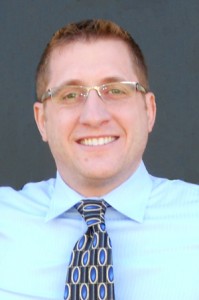Apr 17
2014
The Benefits and Challenges of Connected Healthcare

Guest post by Edward Keiper, president and CEO of Velocity Managed Services.
For physicians’ practices in the 21st century, connectivity is the buzzword. Getting doctors connected to data, patients connected to healthcare providers, and practices connected to networks are just a few of the web-fueled scenarios coming down the pike.
The Health Information Technology for Economic and Clinical Health (HITECH) Act is a game changer and affects just about every aspect of modern medical care. HITECH, part of the American Recovery and Reinvestment Act of 2009, promotes the adoption and meaningful use of health information technology.
As is often the case with a shift this monumental, there are both benefits and challenges of connected healthcare that practice groups will have to address. First, let’s take a look at some of the benefits.
1. Join the Digital Revolution. Just as other industries that went digital years ago, healthcare benefits from the streamlining offered by a networked environment. Clinical interoperability of healthcare IT lowers costs and enhances efficiency by facilitating the comprehensive exchange of health information between care providers, hospitals and patients. The trend is toward innovation in healthcare as the industry as a whole responds to consumer demands and government reforms.
2. Safety in Numbers. As of 2013, more than 323,000 American medical practices and hospitals adopted EHRs and attested as meaningful users, indicating a 266 percent increase over 2012, according to CMS statistics. However, even with this upsurge in participation, those numbers represent only a small percentage of US hospitals that currently keep electronic records and contribute to the health information exchange. So, while the risk of being an early adopter is largely gone, your practice group could still be near the front of the adoption wave.
3. It’s easier. As you can see from the statistics in the previous point, healthcare IT adoption is in an early phase, and for most practices, there is a lack of centralization. To help elucidate the complexity of the system, look no further than the state of Florida, where there are at least 672 EHR vendors. Connecting health information digitally creates a central database that greatly simplifies the process of storing and retrieving all patient data. It’s like finding the needle in the haystack every time.
4. The cloud brings it all together. To add to the intricacy of the system, patient health records may be maintained in multiple siloed locations. Healthcare providers must somehow locate and exchange critical patient information that’s filed away in various sites. The goal is to connect these currently unrelated information systems to improve clinical decision support, care coordination, analysis of population health and lower costs.
5. The outcome is better care. The primary goal of meaningful use law is better patient outcomes. Armed with new rich datasets, digitized health information can be far more than just a basic diagnostic tool. Electronic health records provide clinicians with the data they need to make the most informed care decisions in a more efficient and streamlined process.
The challenges are likely intimidating to many practice groups, but a smart approach can help groups to overcome them. Here are the four most significant connectivity-related challenges that practice groups face:
1. HIPAA Compliance. The HITECH Act tackles the privacy and security issues associated with the electronic transmission of health information. It’s important to note that HITECH toughens the civil and criminal enforcement of the HIPAA rules with stiff fines for noncompliance. You need to keep track of hardware, because lost and stolen equipment can lead to data breaches. It’s important to know the rules and penalties.
2. Mobile Workforce and BYOD. Guidelines aimed at addressing the rapid adoption of mobile devices in medicine are still in the early stages. A mobile device can make a physician’s work much easier, but it makes data theft much easier as well. Additionally, many practitioners bring their own devices to work. Smartphones and tablets are quite convenient for instant access to email, phone messages and patient information. Be sure your practice has a policy in place to safeguard enterprise-owned mobile, as well as BYOD.
3. Meaningful Use. Another aspect of HITECH, meaningful use rules state that providers are mandated to establish the meaningful use of electronic health records by 2014 or risk receiving reduced Medicare reimbursements. Medicaid participants have a 2016 deadline. On the bright side, healthcare providers can get financial incentives for EHR use prior to the government’s deadlines. That means medical practices need to establish and demonstrate meaningful use now or face a penalty later.
4. Next Generation Networks. In the near future, paper records will be replaced by data transmitted instantly through networks. This development opens the door for great advances in patient care. Physician’s practices are rapidly adopting cloud storage because it’s accessible from any point in the world and allows for data collection leading to improved outcomes. Not only are providers getting benefit from the network; patient engagement increases through new apps for mobile devices. All of these developments ultimately lead to reduced time and cost as well as greater overall efficacy.
Overall, the revolution in healthcare connectivity offers promising next generation solutions to some of the most pressing healthcare concerns. Keep up with the latest developments in technology and the law to stay ahead of the game and avoid costly fines.